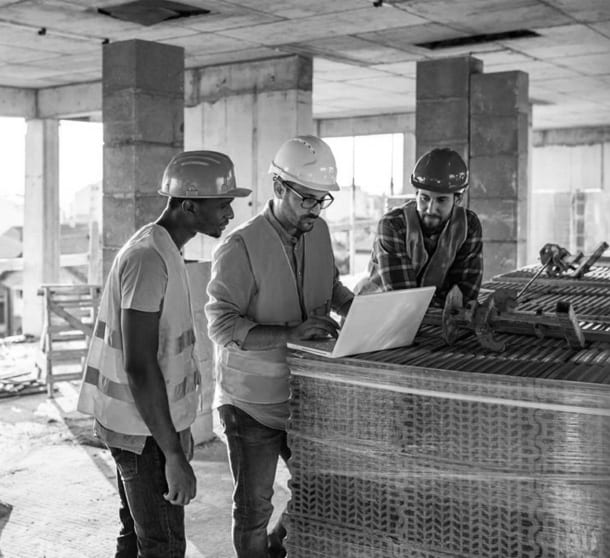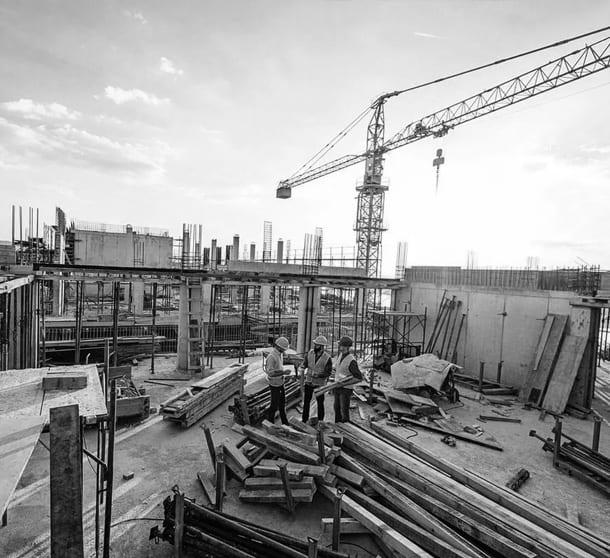However, all this could be fulfilling and easily done. However, navigating the maze of building regulations and managing the cost of your extension can be intimidating. This is a multi-faceted task that requires planning and comprehension, which is exactly why it makes sense to consider house extension ideas that are in line with the big picture and your set budget.
Throughout the following chapters, we delve deep into the world of house extensions, ranging from small room extensions to grand kitchen extensions, and lots more. We take you through the basics of planning and permissions to ensure building regulation compliance at every step. Design considerations will come into effect at the core of the program to channel its output descriptively on paper: a home extension that blends seamlessly with your existing structure. Budgeting your project, choosing a contractor, and a choice selection of fresh property extension ideas will all be included. Be it the petite home extensions you dream of or an ambitious project on your mind, all the guidance shared will keep you geared up for a successful home transformation.
Understanding House Extensions and Their Types
At Force Builders Ltd, our mission in every house extension project is to create spaces that fulfil our clients’ functional needs while also enhancing the aesthetic appeal of their homes. House extensions come in various forms, each presenting unique benefits and challenges. In this discussion, we will explore different types of house extensions, providing insights into single-storey extensions, double-storey extensions, orangeries and conservatories, kitchen extensions, and side-return extensions.
Single-storey Extensions
Single-storey extensions are super popular if you want more living space without changing the whole house. You can add them to the back, side, or even both sides with wraparounds, so you have lots of design options. Whether you want a bigger kitchen with a dining area and living space or need extra rooms like a utility room or home office, single-storey extensions are a budget-friendly way to do it.
Double-storey Extensions
If you need a lot more space, double-storey extensions are perfect. They add extra room downstairs and let you add bedrooms or bathrooms upstairs, basically doubling your living space. Even though they cost more than single-storey extensions, they’re cheaper per square meter, so you get a lot of space for your money.
Orangeries and Conservatories
Orangeries and conservatories are awesome because they mix indoor and outdoor vibes, letting you chill close to the garden all year round. Orangeries feel sturdier with their brick pillars and fancy raised glass roofs, while conservatories are more like all-glass. Both are super versatile and can be used as dining rooms, playrooms, living rooms, or even offices, depending on what you need.
Kitchen Extensions
Kitchen extensions are super popular, especially if your kitchen is kinda small. A side return extension is a cool idea because it uses the space on the side and back of your house. This can turn your kitchen into a bright and open area perfect for cooking and hanging out. Things like glass roofs make it feel airy and full of light, which is what everyone wants in a kitchen extension.
Side-return Extensions
Side-return extensions are a smart way to use that narrow strip of land next to your house that usually just collects junk. They can change up the inside of your home, making it feel bigger and more useful. These are super popular for Victorian houses because they often have that extra space on the side that’s perfect for expanding the layout.
At Force Builders Ltd, we get that picking the right extension for your home is a big deal. Each type has its perks and can boost your living space if done right. Whether you’re thinking about a single-storey extension for a new kitchen or a double-storey one for extra bedrooms, our team is here to help you every step of the way to make sure your extension project rocks.
Planning and Permissions: Navigating the Legal Landscape
Permitted Development Rights
Permitted development rights make it easier for homeowners to extend their houses without dealing with the hassle of full planning permission, as long as they follow some rules. These rules are listed in Schedule 2 of the Order, with Part 1 talking about stuff you can do within your house’s area, like rear or side extensions and adding new windows and doors. However, there are some restrictions for single-storey extensions on designated land, like no cladding on the outside and no side extensions. Plus, the total area of the extension can’t be more than half the land around the original house, so the extension stays proportional to the existing property.
Planning Permission for Extensions
Even though a lot of extensions are okay under permitted development, some projects still need formal planning permission. This is especially true for extensions on designated land with stricter rules or projects that change the building’s footprint a lot. Homeowners should check with their local planning authority (LPA) through their local council to see if they need planning permission. It’s super important because doing extension work without the right permission can get you in trouble, and you might have to undo everything. To avoid issues, it’s a good idea to apply for a lawful development certificate (LDC) to confirm your project is okay or submit a full planning application if it’s not.
Building Regulations and Compliance
No matter if you need planning permission or not, you still have to follow building regulations for any extension project. These rules make sure everything is safe, healthy, and eco-friendly. Most architects, designers, and builders know these rules and what works. For livable extensions like porches and conservatories, it’s important to show how you’ll follow these regulations and maybe make a Full Plans application to Building Control.
Homeowners have a few ways to show they’re following the rules: a Full Plans application, a Building Notice, or hiring an approved inspector. Each option has its pros and cons. The Full Plans application is more thorough and reviewed by the local council, while a Building Notice is quicker but less detailed. Not following the rules can lead to big fines, tearing down your work, and legal trouble, so it’s super important to comply from the start.
By knowing and handling this legal stuff, homeowners can start their extension projects with confidence, making sure everything is legit and up to code. At Force Builders Ltd, we help our clients through these steps, using our expertise to make sure every project meets legal requirements and turns out just how they want.
Design Considerations for a Perfect House Extension
Integrating the Extension with Existing Property
When you’re planning an extension, it’s super important to make sure it fits in with the existing house. At Force Builders Ltd, we think that even if the materials are different, you can still make the new part look good with the old part by matching things like the roof pitch or the overall shape. Ian Phillips from VESP Architects agrees, saying that modern and traditional styles can look great together if you use the right materials and colors. For example, a modern two-storey extension made with zinc and red cedar can still look good next to an old barn if the proportions and shapes match well.
Choosing the Right Materials and Finishes
Picking the right materials is key for both how it looks and how it works. For single-storey extensions, the materials should not only match the old house but also meet environmental and energy standards. Using materials with low embodied carbon, like reclaimed wood or sustainably sourced bricks, can make your extension more eco-friendly. Adding big windows or roof lights can bring in lots of natural light, making the space feel bigger and more connected to the outside. Plus, triple-glazed roof lights can help with keeping the place warm.
Maximizing Natural Light
Getting as much natural light as possible is important for making spaces that are both useful and nice to be in. At Force Builders Ltd, we suggest placing windows and glass doors in spots where they get the best views and still keep your privacy. Adding things like roof lanterns or clerestory windows can bring light from above, creating cool light and shadow effects. For example, garden room extensions can use solar reflective double glazing and skylights to keep the room bright but not too hot. Also, picking the right colours for walls and ceilings can help reflect natural light, making the room feel bigger and more inviting.
The Cost Factor: Budgeting for Your House Extension
Understanding the Costs
When we at Force Builders Ltd start a house extension project, it’s super important to get the financial stuff right. The cost can vary a lot depending on size, location, and materials. In the UK, house extensions usually cost between £1,500 to £2,500 per square meter. For example, a 30m² kitchen extension could be between £45,000 to £75,000, without VAT. It’s smart to budget at least 20% extra for unexpected costs. Work closely with your contractor to set realistic costs and timelines to stay on track.
Cost-effective Design Ideas
Choosing the right design can affect the cost of your extension. Simple, rectangular shapes are usually cheaper than complex ones. Using standard-sized windows and avoiding complicated groundwork can also save money. At Force Builders Ltd, we suggest using materials that offer good quality and value. For instance, concrete blockwork is a low-cost option that many builders know well, and it’s great if you’re thinking about doing some DIY.
Return on Investment
Building an extension gives you more space and can increase your home’s value. Research by Nationwide shows that adding a double bedroom with an en-suite can boost your home’s value by up to 23%. However, the return on investment can vary. Zopa says the average return on extension projects is about 71%. To get the most from your investment, think about what future buyers might want, like more bathrooms or a bigger kitchen.
Choosing the Right Contractor for Your Extension Project
Researching and Selecting Contractors
Picking the right contractor is super important for making your house extension project a success. At Force Builders Ltd, we suggest starting by finding reputable builders and tradespeople. Get quotes, check references, and look at their past work to make sure they do quality stuff. Using sites like Checkatrade can help because you can read reviews and testimonials from other customers. Also, see if the builder is part of a recognized trade body like The Guild of Builders or the Federation of Master Builders, which means they’ve been thoroughly vetted.
Understanding Quotes and Contracts
When getting quotes, know the difference between estimates and formal quotes. An estimate gives a rough idea of costs, while a formal quote should detail all aspects of the project at an agreed price, as long as the specifications don’t change. At Force Builders Ltd, we make sure all quotes are detailed and written, covering the scope of work, materials, and timelines. We also recommend using a formal contract to clearly outline responsibilities and expectations. This should include necessary permissions, insurance details, and a payment breakdown throughout the project.
Working with Architects and Designers
Working with skilled architects and designers can really improve your house extension. Architects help with the initial designs, ensure everything meets building regulations, and help get planning permissions. At Force Builders Ltd, we work with architects to make the most of the available space and ensure the extension is safe and sound. Detailed plans from your architect or designer guide the construction process and are part of the regulatory approval applications.
By following these guidelines and working with experienced pros like those at Force Builders Ltd, you can confidently handle the complexities of choosing the right contractor for your extension project.
Innovative House Extension Ideas and Inspirations
Modern vs. Traditional Extensions
In architecture, there’s a big difference between modern and traditional extensions. Traditional extensions use materials like brick, stone, and timber, reflecting the style from the early 1900s. They often have rectangular plans, simple wooden beams, and pitched roofs to handle rain.
Modern extensions, on the other hand, use cool materials like high-tech steel, glass, and exposed concrete. These materials allow for big glass areas, smooth surfaces, and minimalistic designs that look super sleek. Using prefabricated components can be more expensive but creates a cool contrast with older buildings, making both look better together.
Eco-friendly and Sustainable Options
As people care more about the environment, using eco-friendly and sustainable materials in house extensions is super important. Things like Celcon foundation blocks, low VOC paints, and recycled aggregates are great for reducing the carbon footprint. Adding features like solar panels, skylights, and eco-friendly insulation (like sheep’s wool or hemp) can make your home more energy-efficient.
Using sustainable materials like timber for frames or cladding helps lock in carbon for a long time, lowering the environmental impact of the extension. Also, using local materials and labour supports the local economy and cuts down on transportation emissions.
Technology Integrations
Technology is changing how we do house extensions. 3D modelling and virtual reality let you see and walk through your extension before it’s built, making it easier to fix design issues early on.
Smart home tech is also super cool, giving you more efficiency, security, and convenience. You can control smart lighting, thermostats, and security systems with your phone, saving energy and making life easier. Plus, smart entertainment systems and motorized windows and blinds add a touch of luxury and functionality to your extension.
At Force Builders Ltd, we love adding these innovative ideas to our projects, making sure each extension looks great and works well. Whether you want a traditional style or a modern upgrade with the latest tech, our team is here to help you every step of the way.
Case Studies: Successful House Extension Projects
Before and After Transformations
Homeowners love doing extension projects because the results can be amazing. For example, one house had a bunch of unused space that got turned into a stunning open-plan kitchen diner with big sliding doors showing off the garden. It made the house way more functional and good-looking. Another cool transformation was a bungalow in Warrington that became a bright, open space perfect for family hangouts, thanks to bi-fold doors and a glass lantern roof that brought in tons of natural light.
Challenges and How They Were Overcome
Extension projects can be tricky, with issues like space limits and legal stuff. In one case, a semi-detached house had problems with neighbours, so we did a side extension to solve privacy, overshadowing, and noise issues. In another project, Clarkson Builders handled space and access problems by building artificial pillars to keep the roof from collapsing while they did an extension and garage conversion.
Client Testimonials
The best way to know if an extension project was successful is by hearing from happy homeowners. Clarkson Builders’ clients praised their professionalism and high-quality work. One person was amazed at how their home looked after the project, saying, “I can’t believe it’s the same house,” and loved the garden work too. Red Kite’s clients also loved their new spaces, with one saying, “With Red Kite’s help we have got a brand new fresh living space from what was becoming a pretty tired-looking house.”
At Force Builders Ltd, we’re super proud of handling the challenges of house extensions and making sure every project meets and exceeds our client’s expectations. Our dedication to quality and client satisfaction makes us stand out in London’s competitive building industry.
Getting Started with Your House Extension Project
Initial Steps and Consultations
At Force Builders Ltd, we think the first step for your house extension project is to plan thoroughly. Start by checking if you need planning permission. Thanks to permitted development rights, not all projects need it. But remember, every project has to follow building regulations no matter what.
Talk to professionals who can help manage your extension, whether it’s just a part or the whole thing. This team could include architects, interior designers, project managers, and extension builders. Getting a pro involved early can make everything smoother, handling all the legal and design stuff properly.
Setting Timelines and Expectations
Knowing the timeline for a house extension is super important for planning. The planning stage alone can take 8-10 weeks or more, depending on how complicated the project is. Check with your local building authorities to know the exact requirements and regulations for your extension.
At Force Builders Ltd, we use advanced tools like CGI visualization to avoid miscommunication and make sure you can see and approve the design before we start building. This helps set realistic timelines and makes sure everyone knows what to expect.
Preparing for Construction
Before construction starts, prepare well to avoid disruptions. Tell your home and contents insurance provider about your plans because the extension will probably increase the rebuild cost of your house. If you own the property on a leasehold basis, make sure you have the right to make changes, usually needing approval from the freeholder.
Consider how the current market conditions might affect your project. Material shortages and price hikes can mess with the timeline and budget, so talk to a quantity surveyor to manage costs effectively. Also, make sure there’s access space for vehicles and order all necessary materials unless your tradesperson has agreed to handle this.
By following these steps and using the expertise of Force Builders Ltd, you can make sure your house extension project starts off strong, setting up for a successful build.
Wrapping Up with Force Builders Ltd
Throughout this journey with Force Builders Ltd, we’ve explored the complex world of house extensions, giving you a complete guide on how to expand your living space successfully. Whether you’re planning a small single-storey addition or a bigger double-storey project, we’ve covered everything from planning and design to picking the right contractors and adding eco-friendly and tech-savvy features.
We’ve talked about how important it is to make sure your new extension blends well with your existing house, understand the legal stuff, design for natural light and sustainability, and budget smartly to keep things on track. Each phase is important for making sure your home expansion goes smoothly and is worth it in the end.
Transforming your home with extensions is detailed but rewarding, with each step building a better living space for your current and future needs. Force Builders Ltd is here to help make these ideas a reality, guiding you from start to finish. As you think about your next steps, remember that we’re here to ensure your extension project matches your dreams and practical needs, turning your house into a space where you truly thrive.
FAQs
- Which home extensions increase property value the most? Adding extra double bedrooms and bathrooms usually boosts property value the most. For a more exact estimate on how much value an extension could add, it’s a good idea to talk to local real estate experts and architects.
- What are the optimal types of house extensions? Side return extensions are super popular because they use underused space well, improve your living environment, and let you keep your garden area. This kind of extension often makes the kitchen bigger and brighter, turning it into a more open and inviting living space.
- How can I extend my house cost-effectively? Building extensions with brick is one of the cheapest methods. Since this type of extension is usually visible from the front of your house, it’s important to choose materials that match your home’s existing style.
- What is the most costly aspect of building a house extension? The foundation work and structural changes needed to support the extension are usually the priciest parts. Significant costs also come from the labor required during construction.


















 #
#  #
# 
